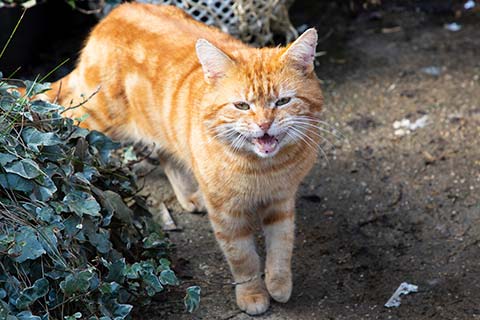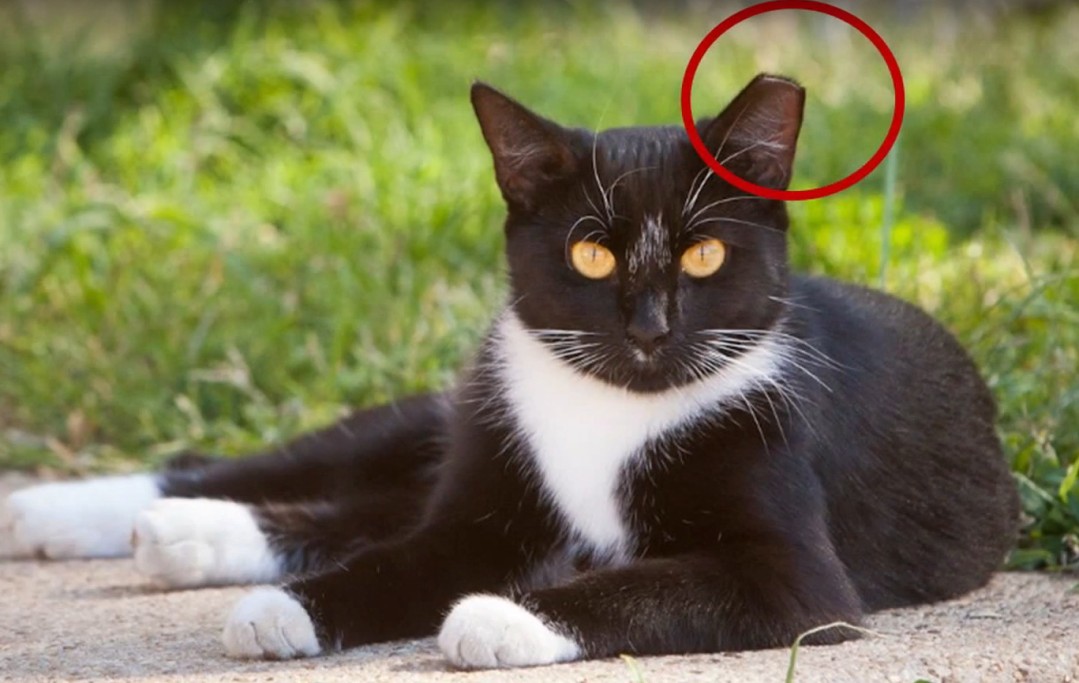If a feral cat has kittens, provide them with a safe space and contact a local feral cat organization for support. Ensure they have access to food, water, and shelter without disturbing their space.
Discovering that a feral cat has given birth to kittens can be both an exciting and concerning event. As you consider the well-being of the feline family, knowledge about their needs and local resources can make a big difference. Feral cats, known for their independence and survival skills, will require a helping hand to ensure the kittens grow in a safe environment.
By reaching out to a feral cat organization, you can tap into their expertise in handling such situations. These groups often provide guidance on how to manage feral cats and their offspring, as well as offer trapping-neutering-return (TNR) services to help control the population. Engaging with them introduces a humane approach to caring for the newborn kittens and their wary mother, promoting a balance between human intervention and the felines’ wild nature.
The Wild World Of Feral Cats
The wild world of feral cats can be mysterious and captivating. When a feral cat has kittens, understanding their unique needs becomes crucial. Observing these untamed felines requires knowledge and compassion, particularly when they expand their families.
Feral Vs. Stray: Knowing The Difference
It’s vital to distinguish between feral and stray cats. Feral cats are born and raised without human contact. They are wary of humans and often live in colonies. On the other hand, stray cats usually have a background with people but have lost their homes or wandered away. They might approach humans and can often be re-socialized.
| Characteristics | Feral | Stray |
|---|---|---|
| Interaction with Humans | Avoids and hides | Might seek attention |
| Socialization | Not socialized | Potentially socialized |
| Ears | Often tipped or notched | Typically normal |
| Tipped or notched ears indicate a cat has been trapped, neutered, and returned (TNR) to the wild. | ||
Understanding Feral Cat Behavior
Feral cats exhibit behaviors linked to survival. They are incredibly territorial and often avoid contact with humans. Here are some key behaviors:
- Noise avoidance – Tends to flee from loud sounds
- Hunting – Hunts for food, displaying natural predatory actions
- Night activity – More active at dawn and dusk
- Subtle communication – Uses body language over vocalization
By understanding these behaviors, you can create a supportive environment for a feral mother and her kittens. Give them space and avoid direct interactions. Enclosures or feeding stations can offer safety and sustenance without intruding on their natural instincts.
Initial Steps When You Find Feral Kittens
Finding feral kittens can pull at your heartstrings and compel you to step in immediately. Before rushing to action, knowing the initial steps to take is crucial for the well-being of the kittens and your safety. It’s time to navigate this delicate situation with care and knowledge.
Assessing The Situation
Upon discovering feral kittens, resist the urge to touch them. Instead, observe from a distance to:
- Determine if the mother cat is nearby.
- Check the kittens’ health visually.
- Estimate their age based on size and activities.
Keep in mind that the mother cat may be out searching for food.
Give her a few hours to return before intervening.
Safety First: Avoiding Harm
Your safety is as important as the kittens’ well-being.
Follow these steps to prevent harm:
- Keep your distance initially to avoid stressing the mother cat.
- Wash your hands before and after any contact.
- Use gloves if handling is necessary.
Securing the area prevents accidents and keeps predators away.
Use barriers or a box to contain the kittens if they’re in danger.
Remember, stay patient and calm as you assess and secure the site.
To Rescue Or Not: Making The Right Choice
Making the right decision when you discover a feral cat with kittens requires care and consideration. Life on the streets is tough for kittens. Each action can mean their survival. So, to rescue or not?
Evaluating The Kittens’ Health
First steps include observing the kittens from a distance. Look for signs of distress or illness. Are they moving and playing? Do they seem weak or unwell? Remember, healthy kittens have clear eyes and clean fur.
- Clear eyes and noses indicate good health.
- Coats should be clean and well-groomed.
- Observe for lively movement and play.
When To Intervene: The 8-week Rule
Patience is key. Kittens thrive best when weaned naturally. The magic number is eight weeks. Until then, they learn essential skills from their mother. Is the mother cat present? Are the kittens safe? Can you provide food and shelter without removing them?
| Age | Action |
|---|---|
| 0-4 weeks | Monitor from a distance, minimal interference. |
| 5-8 weeks | Continue observing, begin socialization if safe. |
| Post-8 weeks | Safe to rescue for adoption process. |
Keep watch for dangers. Are predators or threats nearby? Is the weather extreme? This may push for earlier intervention. Reach out to local rescues and vets for guidance. Your actions can save lives.

Credit: caws.org
Preparation For Safe Capture
When a feral cat has kittens, the first step is safe capture. Proper preparation is crucial. It ensures the safety of both the kittens and the rescuer. Let’s dive into how to set up for a successful and secure capture.
Gathering Necessary Supplies
Before attempting a capture, gather all essential items:
- Cat carrier: Sturdy and secure for transport.
- Gloves: Thick gloves to protect hands.
- Blankets: Soft blankets to comfort the kittens.
- Cat food: To lure the mother cat.
- Water: Hydration is important for the feral family.
- Towels: Useful for handling and covering carriers.
Choosing The Right Time And Approach
Timing is key. Here’s how to choose the best time and method:
- Wait until dusk or dawn when feral cats are most active.
- Observe from a distance to avoid stress.
- Move slowly and calmly to keep the cats at ease.
- Use food to guide the mother cat into the carrier first.
- Place kittens in a separate carrier with soft bedding.
Rescue Process And Post-capture Care
Feral cats often go unnoticed until a litter of kittens appears. When a feral cat has kittens, it triggers a critical rescue process. Understanding how to safely and humanely capture the family and provide post-capture care ensures the well-being of these vulnerable animals. Here’s a guide to the rescue and post-capture care process:
Humane Trapping Techniques
Safe trapping is essential for the mother cat and her kittens. Here’s how to do it:
- Use a baited trap with food to lure the cat inside.
- Set and monitor traps carefully to ensure quick retrieval post-capture.
- Check traps every few hours to minimize stress for the cats.
- Avoid using blankets or covers that could scare the cat in the trap.
- Entrap kittens using non-separating methods to keep the family together.
Providing Immediate Care And Shelter
Once captured, the feral cat family needs immediate attention:
| Action | Details |
|---|---|
| Isolate | Keep the family in a quiet, isolated space to reduce stress. |
| Assess Health | Check for obvious signs of distress or injury. Call a veterinarian immediately if needed. |
| Provide Comfort | Offer a soft bedding area and create a warm environment. |
| Supply Food and Water | Ensure mother has continuous access to fresh water and nutritious food. |
Performing these steps ensures the cat family’s best chance at a healthy life. Kindness and patience go a long way in feral cat rescue and care.

Credit: www.rspca.org.uk
Long-term Solutions For Feral Kittens
Long-term Solutions for Feral Kittens: Feral kittens present a unique challenge to those wishing to ensure their health and safety. While immediate care is critical, developing a plan for their future stands paramount. Step in with a compassionate heart and a strategic mind. Let’s transform the lives of these wild-born babies with sustainable solutions.
Socialization Tips For Adoption
Socializing feral kittens paves the road to adoption. Time and patience remain key.
- Start young: Introduce human interaction by 8 weeks.
- Be gentle: Soft voices, slow movements build trust.
- Regular handling: Brief, daily sessions improve tameness.
- Positive associations: Couple handling with food and play.
- Other pets: Safe exposure to domestic animals can help.
Spay/neuter Information
Spaying and neutering feral kittens curb overpopulation. Locate a TNR (Trap-Neuter-Return) program or local clinic offering these services.
| Age to Spay/Neuter | Benefits | Post-Surgery Care |
|---|---|---|
| 5-6 months | Prevents unwanted litters | Monitor for 24-48 hours |
| As early as 8-10 weeks | Reduces aggressive behavior | Keep indoors and warm |
Finding Permanent Homes
Match feral kittens with loving forever homes. Use effective strategies:
- Network through social media and community boards.
- Create eye-catching flyers with images and personality traits.
- Partner with pet stores for adoption events.
- Coordinate with local rescue organizations for broader reach.
- Screen potential adopters to ensure a good match.

Credit: www.safecareclinic.org
Frequently Asked Questions For What To Do When Feral Cat Has Kittens
What Do You Do If A Stray Cat Has Kittens?
Ensure the stray cat and her kittens are safe and undisturbed. Contact a local animal shelter or rescue group for guidance on the next steps and potential fostering or adoption. Avoid moving the family unless they’re in immediate danger.
Should You Take Kittens From A Feral Cat?
Generally, it’s best not to take kittens from a feral cat. They require their mother’s care for survival and health. Instead, contact local animal services for guidance on dealing with feral kittens.
How Long Do Feral Cats Stay With Their Kittens?
Feral cats typically stay with their kittens for about 4 to 5 months. During this time, they teach survival skills necessary for independent living.
What Do You Do When A Stray Cat Gives Birth?
Provide a safe space for the cat and her kittens, ensuring they are warm and undisturbed. Contact a local vet or animal shelter for professional advice. Keep them well-fed and check for signs of distress or illness, seeking veterinary care if needed.
Consider spaying the mother cat to prevent future litters.
Conclusion
Tackling a situation where a feral cat has given birth to kittens requires compassion and knowledge. Remember these key points: provide shelter, contact local feline charities, and ensure health checks. Your actions can lead to safe, healthy lives for these wild-born felines.
Let’s show kindness and responsibility towards our feline friends.



